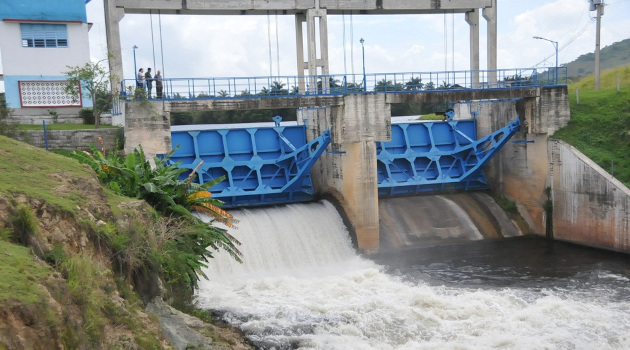From November 2022 to February 2023, the driest period in the past 58 years, the situation prompts us to reflect on the urgent need to maximize saving and rationalization measures in water use, especially those that depend on water supplies. Catchment works (sources of supply) for the various aquifers in the province of Cienfuegos.
To better understand the magnitude of the crisis in the availability of this vital water resource, we must remember that the only way to supply the aquifers, which are used by the majority of the population of the southern region, is rain, and this is exactly what has been lacking so far in what is called the dry period, from November ) to April.
According to the data provided by MSc engineer Luis Estupiñán Suárez, specialist from Hydroiser Exploitation, according to the historical average, so far in the drought we should have had an accumulated precipitation of 220.4 mm, and only 54 mm, which means that we hardly represent 24.5 percent of the average phase value.
The negative behavior is similar for the eight municipalities, with Aguada being, in descending order, 181.4 mm below, Roda (175.7), Palmira (172), Cruces (171), Comanayaga (162.9), Cienfuegos (126) and Abris (149).
The main consequence of the lack of rain is that at this exact moment 24 watersheds are affected, one complete and the rest partial, a fact that leads to an insufficient supply of drinking water via this route for the nearly 19,000 Cienfuegueros who depend on them. Sources fed from CF-1 Hánabana, CF-3 Abreus, CF-4 Cartagena, CF-6 Cienfuegos, CF-7 Cumanayagua, and CF-5 Lajas.
Of course, the prefectural authorities did not cross their arms in order to counteract the effect of the lack of precipitation. One of the most important measures is the activation of the temporary drought response group.
Another important measure is the removal of such collection works near other water channels, the exploitation of which could affect the consumption of the precious liquid intended for the population. By the way, in this sense, the application of Law No. 124, on terrestrial waters, in which Article 46.1 establishes the priority of servicing the resource in case of extreme events, becomes quite valid.
It is clear that the current situation forces all consumers, both in the residential and government sectors, to maximize water savings in the first place, with the conviction that only with a conscious attitude will it be possible to conserve the water resource.
In the opinion of Estupiñán Suárez, it is no less important to reduce the pumping hours of those stations responsible for this supply, since it is also necessary to extend the delivery times to consumers so that the sources can be restored, to improve the weather conditions in terms of precipitation as expected in the spring seasons..
In another context, the specialist from the Hydraulic Exploitation Company determined that the surface waters exhibit a completely different behavior, since, as a whole, the six reservoirs in the province accumulate 82 percent of their fill capacity. Specifically, the Paso Bonito and Abreus dam complexes provide liquid to the residents of Cienfuegos and other towns and settlements located on the routes of these aqueduct distribution networks.
However, the expert clarifies that the presence of surface water does not mean that at a particular moment there are no effects, as happened, due to a failure in the pumping systems in each of the water treatment plants or the same electrical fluid failure as a result of a scheduled power outage or not, in case it is not completed obstetric groups.
On the other hand, the large number of leaks that are discovered daily in the distribution networks and neighborhoods of the regional capital cannot be underestimated, and not a few of them are caused by the lack of discipline of consumers themselves with connections without adequate technical requirements. This, along with the excessive consumption of some state entities, can also contribute to instability in the supply service.

“Unapologetic tv specialist. Hardcore zombie trailblazer. Infuriatingly humble problem solver.”







More Stories
Russian air defense intercepts five Ukrainian drones over the Bryansk region
Columbia, Harvard, Emory: How protests against the war in Gaza spread to major American universities.
Popular Consultation and Energy Crisis Week is celebrated in Ecuador